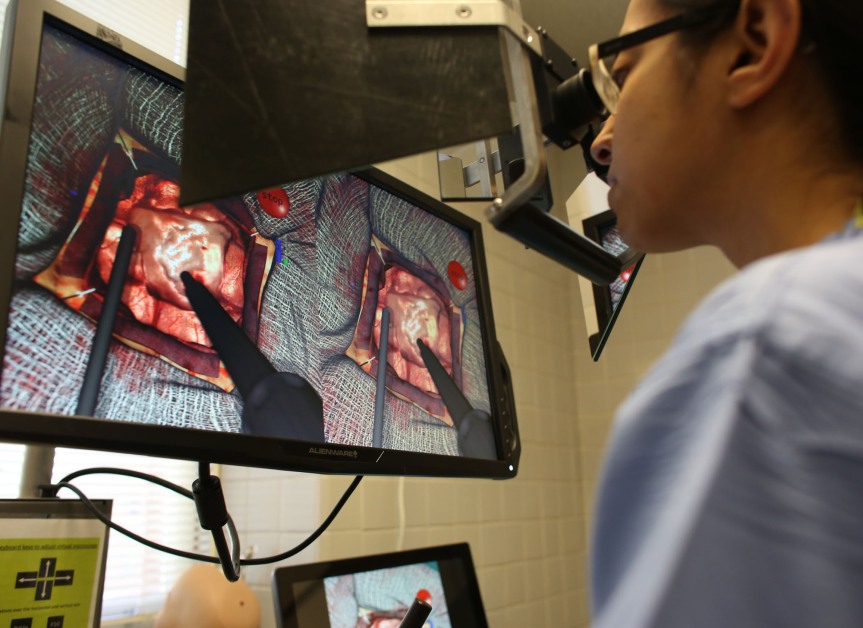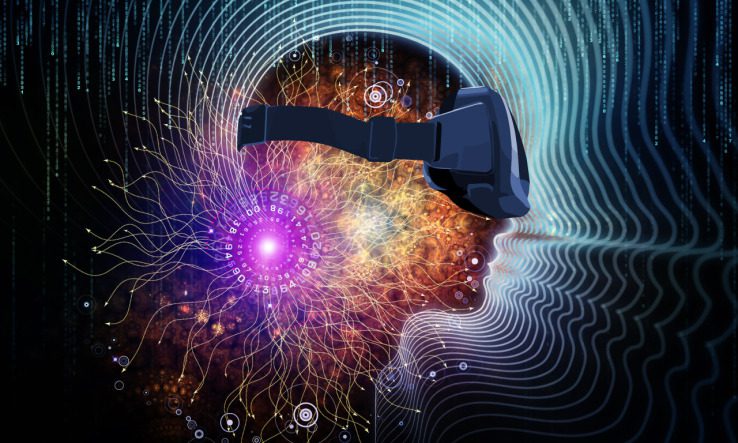As a developer, there’s not a lot of technology that truly surprises me or completely changes my life. Having said that, VR is the exception to this rule as VR has changed a few aspects of my life on both a regular basis and a developmental basis. Here are 10 things about VR that will almost certainly change your life.
1. Virtual Tours
While it did occur to me that having a virtual tour of a place would be fun, with the advent of 360 video technology and VR the existence of this technology sprang to life. As a parent, this was a fantastic opportunity for me as I could experience places in the world, I had never been, with my son. This would allow me to teach him about other cultures more effectively, which is something that many educational areas have caught on to.
2. Fun Exercise Actually Exists
At 358 lbs, I was obviously one to avoid exercise when possible but that was simply because exercise feels like a chore more than an activity.
Children grow up exercising with other kids and it’s never really ingrained into a child that they need to include it as part of their routine. With the Wii, fun exercise came in the form of you versus the computer with a remote at the television. To this day, there are still comical video captures of Wii remotes destroying TVs. When the Oculus came out, I got really excited but when I learned the device would be next to the price of a console, I just didn’t want to buy it. However, this did lead me to AR, which is where my phone comes into play with games such as Clandestine: Anomaly and Zombies, Run! These two games introduced to me how exercise could be fun and thus AR and VR are now part of my daily life.
After losing 58 pounds and continuing to drop more, my role in exercise has obviously changed because of VR and AR.
3. Improved Life for Physical Therapy
VR fitness, or rather AR fitness, has given me access to a more addictive form of exercise, which is a good thing. Herniation of spinal discs, GERD, and Sciatica are common issues with individuals who sit at the computer all day. With VR and AR fitness, exercise becomes easier and moving past the chronic pain is virtually unnoticeable now. It makes physical therapy easy and not only has this changed how I exercise, but I believe such a technology would benefit many more individuals who need such physical therapy.

4. Outlook of The Cyborg Future
I’m one of those individuals hoping that the ability to merge my body with a robot is within my lifetime. It’s not a fear of death, rather I would prefer to have a couple hundred more years to try everything in my life. VR Technology, rather it’s incredibly quick advancement, increases the probability that my wish is more realistic. VR is the challenge for robotics. We already have the ability to map out a brain, an A.I. serving as a lawyer, robotics controlled by the brain, suits that simulate feeling and glasses that let the colorblind see color. Therefore
- We are already on the verge of creating a brain
- We can grow organs
- We don’t have the storage capacity but we can transfer the information already and we’re getting crazy amounts of space on regular hard drives
- We have drives that can prevent data loss for countless years
- We can simulate feeling
- We can simulate hearing
- We can transfer thought into action
- We can simulate taste
- We can now simulate Virtual Reality with little trouble
Why are all of these important? It translates into all the combined technologies we need to make cyborgs possible, which means we could really live forever, possibly, and that’s amazing.
5. Implemented Ideas
Now that Virtual Reality is, well… a reality, many ideas dealing with both games and nearly every other practice have completely changed. VR is the future for nearly everything, not just fitness and games, but health, medical, dental and a plethora of more verticals. Just take heart attacks as an example, which are the most vague things in the world. If you want to know what pain can lead to a heart attack it’s arm, chest, leg, and/or back pain.
Yeah, that’s how vague it is and they expect you to go to the Emergency Room and not self-diagnose. Why is it so vague? Because there’s a multitude of other things that have the exact same symptoms. How do they figure out if you are having one? By using a 9-point or 12-point ECG, which is just 9 or 12 diode pads placed on your chest, arms, and legs to map out your electrical patterns. That seems incredibly simple, especially when you see that they just look at a graph with 7 elements to see if there is a deviation from the norm. It costs maybe $200 to enter an ER, let alone get anything done, and many Americans without health insurance simply can’t afford this.

There are several other techniques they use to determine a heart attack, but that’s not the point of this. Imagine a doctor being able to interview a patient in transit to the ER via VR. No need to go in if you are sick. No need to go in unless there’s something physically wrong with you. You could have an app that told you what was wrong with you, without telling you that you had 50 other possible symptoms (thank you Web MD), and would tell you if you needed to see a doctor. That would change hospital wait times, which would result in people being saved quicker, leading to more people being saved, and this is just one industry.
6. Freelance Industry
Freelancing is currently taking up nearly every industry that requires a computer, but a lot of individuals who are new to these industries no longer have the ability to learn how to function inside of these industries. I work in two Catch 22 industries, which means they expect you to be young with tons of experience. Now that Virtual Reality is starting to inject itself into more professional areas, this Catch 22 will become less prominent and individuals will be able to get into these industries easier. This means more competition and availability of such positions.
7. Views On Video Game Worth
As we have seen with the Mobile and VR Market, when an industry first begins, the most commonly targeted games are the ones that are short and addictive. Growing up with games primarily delving into storylines, these new genres of games were viewed negatively by a large group of the culture around gaming due to what looked like “Get Rich Quick Schemes” based on psychology. My views, before Mobile and VR, primarily suggested the gaming was a “pure” industry. You made a game because you wanted a quality product that told a story. However, after the Mobile and VR exploded, my views on video games became more open to the idea that games were mental puzzles more than anything. With VR specifically, it’s changed my view completely as I find that even the small games provide a rich experience that has been better than long storyline based video games in some cases.
https://www.youtube.com/watch?v=vxjvNDwJjmk
8. Re-Experiencing Horror
There was a point in my life where I gave up my favorite industry because it not longer frightened me. Horror games had little to no effect on me and horror movies had even less of an effect. In order to be frightened, I had to be scared in real life and this was not easily accessible. With VR, I can enjoy my favorite industry again because it combines the elements of movies and games with the sense of reality in the virtual environment. I was able to come back to an industry I had long given up on because I was desensitized. With VR, I am now as sensitive as I was when I was a small child and this is something many horror enthusiasts miss out on.
9. Movement without Legs
This is something that has been rarely discussed in the VR industry, but it has the impact to change the lives of many paralyzed individuals. The most difficult part about being paralyzed is that you cannot enjoy the art of walking, which is a cruel irony in that VR games currently don’t have a standard movement technology. VR technology gives individuals the opportunity to play games with their friends that require physical activity and, as technology around it improves, it can help change the lives of more and more paralyzed individuals. Google’s eye tracking can make it so that paraplegics can play video games again by just using their eyes.
10. Mathematics Involving Z
When developing websites, the most common axis used is the X & Y axis, otherwise known as up, down, left, and right. Z is where you go from forward to backward, which is how the depth of field and 3D, along with VR, work. You are a dot on an X, Y, and Z axis when it comes to VR and now that VR web development has become a topic, there’s a lot of buzz around programming languages that have taken notice of this. In some of my previous articles, I’ve noted that developers have to try to account for at least three devices. This means that the style of the website is redesigned at least three times so that it looks good on computers, tablets, and phones. With VR Web, a core language of the basics of the web comes into question; CSS or Cascading Style Sheet. While CSS has some 3D aspects to it, such as transform, rotate, and translate, it is not a 3D software and wasn’t really designed to be. Now that I know the next leap for the Web, beyond HTTP2, is VR, I also know that my knowledge of CSS is about to get exponentially bigger. Any web developer that has just entered the industry will be affected by the change when VR web becomes a reality.
VR technology has the potential to change every aspect of our lives. As of right now, this technology is making great strides in the video gaming industry. However, just like video games eventually became education, we will see VR technology implemented into much more than video games over time and it will be much more than an addiction. VR will be our new shared reality.






